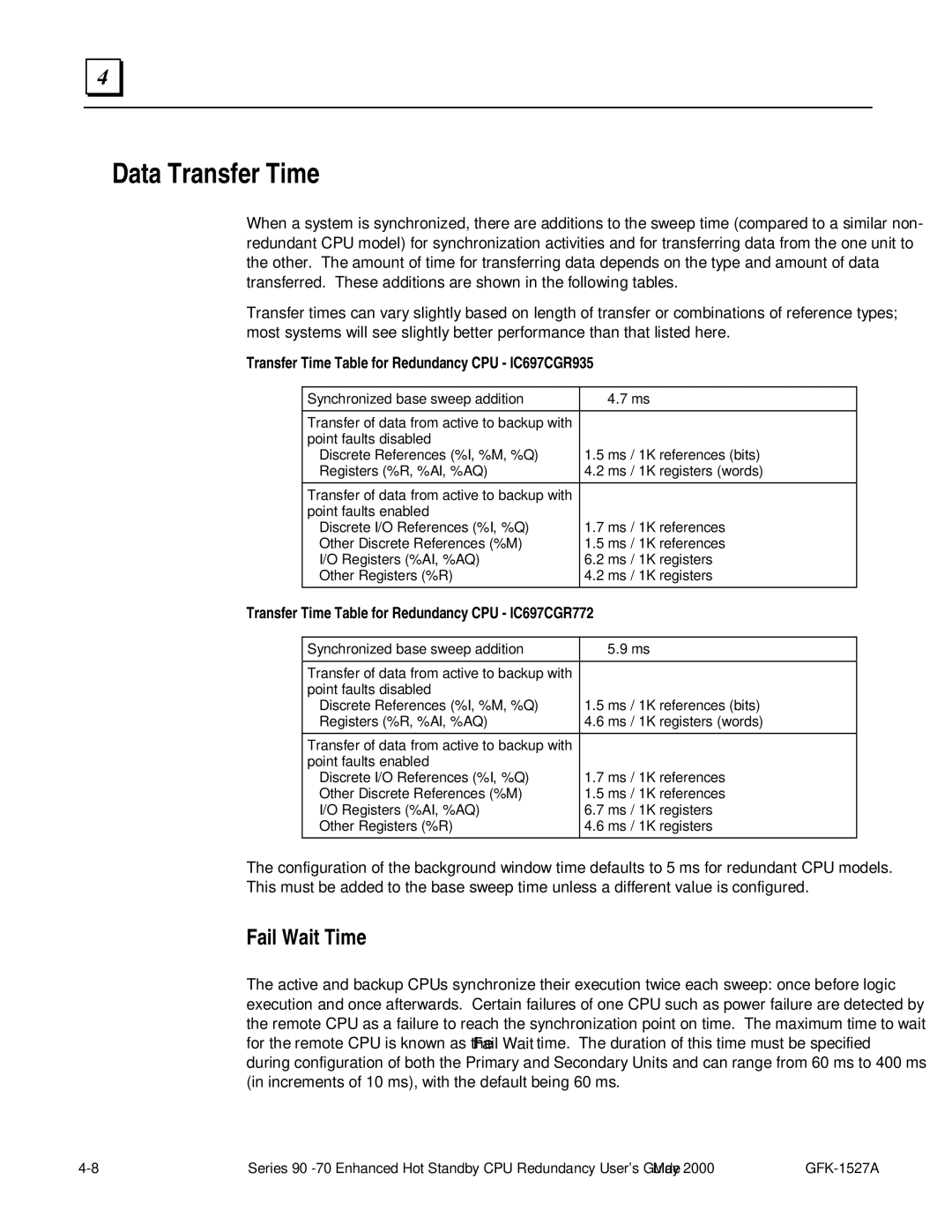4 |
Data Transfer Time
When a system is synchronized, there are additions to the sweep time (compared to a similar non- redundant CPU model) for synchronization activities and for transferring data from the one unit to the other. The amount of time for transferring data depends on the type and amount of data transferred. These additions are shown in the following tables.
Transfer times can vary slightly based on length of transfer or combinations of reference types; most systems will see slightly better performance than that listed here.
Transfer Time Table for Redundancy CPU - IC697CGR935
Synchronized base sweep addition | 4.7 ms |
|
|
Transfer of data from active to backup with |
|
point faults disabled |
|
Discrete References (%I, %M, %Q) | 1.5 ms / 1K references (bits) |
Registers (%R, %AI, %AQ) | 4.2 ms / 1K registers (words) |
|
|
Transfer of data from active to backup with |
|
point faults enabled |
|
Discrete I/O References (%I, %Q) | 1.7 ms / 1K references |
Other Discrete References (%M) | 1.5 ms / 1K references |
I/O Registers (%AI, %AQ) | 6.2 ms / 1K registers |
Other Registers (%R) | 4.2 ms / 1K registers |
|
|
Transfer Time Table for Redundancy CPU - IC697CGR772
Synchronized base sweep addition | 5.9 ms |
|
|
Transfer of data from active to backup with |
|
point faults disabled |
|
Discrete References (%I, %M, %Q) | 1.5 ms / 1K references (bits) |
Registers (%R, %AI, %AQ) | 4.6 ms / 1K registers (words) |
|
|
Transfer of data from active to backup with |
|
point faults enabled |
|
Discrete I/O References (%I, %Q) | 1.7 ms / 1K references |
Other Discrete References (%M) | 1.5 ms / 1K references |
I/O Registers (%AI, %AQ) | 6.7 ms / 1K registers |
Other Registers (%R) | 4.6 ms / 1K registers |
|
|
The configuration of the background window time defaults to 5 ms for redundant CPU models. This must be added to the base sweep time unless a different value is configured.
Fail Wait Time
The active and backup CPUs synchronize their execution twice each sweep: once before logic execution and once afterwards. Certain failures of one CPU such as power failure are detected by the remote CPU as a failure to reach the synchronization point on time. The maximum time to wait for the remote CPU is known as the Fail Wait time. The duration of this time must be specified during configuration of both the Primary and Secondary Units and can range from 60 ms to 400 ms (in increments of 10 ms), with the default being 60 ms.
Series |
